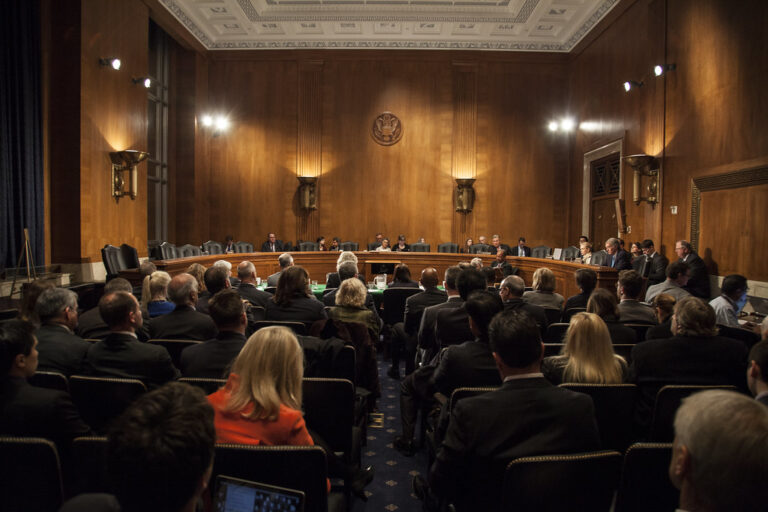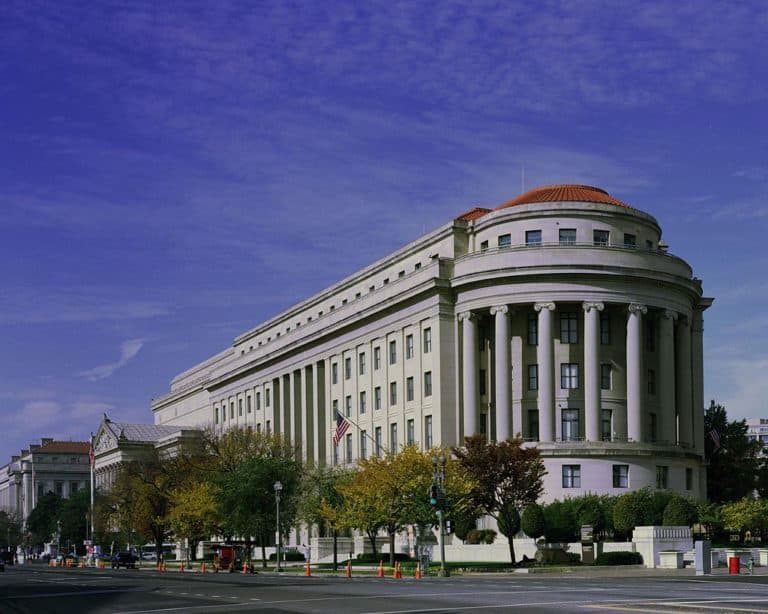In the last ten years, but particularly in the last two, states and localities have begun to enact displaced worker protection laws. These laws, which are currently on the books in ten cities, counties, and states, provide some temporary protection for the employees of service contractors when their employers lose a contract. This explainer offers an overview of existing displaced worker protection laws and summarizes the legal challenges they have faced.
The Laws
The first displaced worker protection (DWP) law was passed in Washington, D.C. in 1994. Since then, statutes have been enacted in Providence, Rhode Island; New York City; San Francisco; Los Angeles; California; Philadelphia; St. Louis, Missouri; Newark, New Jersey; Westchester County, New York; Montgomery County, Maryland; and Cook County, Illinois (subsequently repealed).
The laws have a good deal in common with one another. They are all specific to service workers (though some are limited to particular industries). In addition, they all establish a transition period, typically of 90 days (but only 60 in California’s law), at the commencement of a new contractor’s contract during which the previous contractor’s employees cannot be fired without cause (though they can typically be laid off if the new contractor requires fewer employees than did the previous contractor).
But, they differ somewhat in the details. Some of the laws (St. Louis, Newark, Westchester County, and Montgomery County) apply regardless of how long a worker was employed by the previous contractor; others (Providence, Washington, D.C., New York City, California, Los Angeles, San Francisco, and Philadelphia) apply only to workers who had been employed by the previous contractor for a certain amount of time when the new contractor took over (between three and twelve months, depending on the ordinance). Some (New York City, Los Angeles, and St. Louis) apply only to workers who earned less than a particular hourly wage and/or worked more than 15 hours a week (Washington, D.C., California, San Francisco, Philadelphia, and St. Louis).
Many of the ordinances exempt small businesses by limiting application of the law to contractors with a certain number of employees (Washington, D.C., California, San Francisco, Philadelphia, and Montgomery County) or to buildings of a certain size (New York City and St. Louis). A few of the laws apply only to contracts with the City (Los Angeles and Newark) but the majority apply to all contractors with contracts within the city, county, or state (depending on which entity passed the law)
Many of the laws (Washington, D.C., New York City, California, San Francisco, St. Louis, Newark) require that at the end of the transition period, the successor contractor conduct evaluations of each employee and rehire employees whose performance was satisfactory.
The enforcement mechanisms for the laws vary. Most provide workers with a right of action to sue the party awarding contracts (Providence, New York City, and Philadelphia), the successor contractor (Providence, Washington, D.C., New York City, California, Los Angeles, San Francisco, Philadelphia, and Newark), and/or the terminated contractor (Providence, Philadelphia, and Newark) for violations of the law. Available remedies for such suits include backpay and attorneys fees (Washington, D.C., Los Angeles, and San Francisco) or backpay, reinstatement, and attorneys fees (Providence, New York City, California, and Philadelphia).
A few statutes have unique enforcement mechanisms. In addition to providing workers with a right of action to sue for violations, Philadelphia’s law mandates that “Any awarding authority or contractor who knowingly violates this Chapter shall pay penalties per employee per day of violation of $50 to $100.” St. Louis imposes a fine of not more than $500 and/or a term of imprisonment of not more than 90 days for violations. In addition to permitting workers to bring suit, Newark permits the City to cancel contracts with violating parties and to ban a violating contractor from holding City contracts for three years. Montgomery County’s ordinance requires workers to file a complaint with the Executive Director of the Office of Human Rights if the ordinance has been violated.
Legal Challenges
Four courts have considered legal challenges to DWP statutes (the California Supreme Court, the First Circuit, the Eastern District of New York, and the D.C. Circuit). All upheld the statutes. However, a federal court in Minnesota, struck down a related statute on grounds that likely would have invalidated a DWP statute.
Opponents of DWP have raised objections to the laws based on the two traditional types of NLRA preemption: Machinists and Garmon preemption. The 2011 First Circuit case of Hospitality Association v. City of Providence is illustrative. The Plaintiffs in that case challenged the DWP law on three Machinists preemption grounds and a Garmon preemption ground. The court rejected all of the challenges, finding the law not preempted.
The first Machinist challenge implicates the NLRB’s successorship doctrine. The Board has held that employers found to be “successors” have an obligation to bargain with an existing union. The idea is that a mere change in ownership should not strip unionized employees of their bargaining rights. In determining whether an employer is a “successor,” the Board considers whether there is “substantial continuity” between employees’ job situations before and after the change in ownership, whether the bargaining unit continues to be appropriate, and whether the majority of the new employer’s workforce is represented by the union.
The Plaintiffs in Hospitality Association argued that because the DWP law required employers to maintain the predecessor’s workforce, it essentially mandated that the employer become a “successor.” Because successorship was intended to be left to the free play of economic forces, the DWP law was preempted under Machinists. The First Circuit rejected this argument, finding it unlikely the NLRB would base its determination of successorship on the DWP law. The court stressed that for an employer to be found to be a successor, there must be a showing that the employer made a “conscious decision” to take advantage of the trained workforce of its predecessor. There would be no such “conscious decision” if an employer maintained its predecessor’s workforce solely in order to comply with the DWP law.
The Plaintiff’s second Machinists argument was that “[b]y providing the employees with benefits for which they otherwise would have had to bargain, the Ordinance impermissibly enhance[d] employee and union bargaining power.” In responding to this argument, the First Circuit noted that the Supreme Court had rejected a similar argument in Fort Halifax Packing Co. v. Coyne. There, the Court held that any “state law that substantively regulates employment conditions” provides employees with benefits for which they would otherwise have to bargain. “[E]mployers and employees come to the bargaining table with rights under state law that form a ‘backdrop’ for their negotiations.”
The Plaintiffs’ final Machinists argument was that the NLRA protects employers’ right to hire and fire at their discretion; states cannot interfere with this right. The First Circuit denied that the Supreme Court had ever recognized an employer right under the NLRA to hire and fire without interference. Indeed, the court wrote that “to the extent that the NLRA has touched on employers’ hiring and firing abilities, it has largely limited them.”
Finally, the Plaintiffs argued the law was preempted under Garmon because by regulating mandatory subjects of bargaining (“the obligation to hire, the right of an employer to subcontract, and the existence of a good cause termination standard”), it interfered with conduct protected by the NLRA. The First Circuit rejected this argument, noting that “states can, and do, regulate numerous subjects that the NLRB has held to be mandatory subjects of bargaining,” such as wages. Moreover, because “the NLRA does not itself protect an employer’s ability to hire or fire, and indeed regulates it, such conduct is not arguably protected or arguably prohibited.”
Although courts have rejected the preemption challenges to DWP laws thus far, most of the laws are relatively new, and we can likely expect more challenges to come. Stay tuned.






Daily News & Commentary
Start your day with our roundup of the latest labor developments. See all
November 21
The “Big Three” record labels make a deal with an AI music streaming startup; 30 stores join the now week-old Starbucks Workers United strike; and the Mine Safety and Health Administration draws scrutiny over a recent worker death.
November 20
Law professors file brief in Slaughter; New York appeals court hears arguments about blog post firing; Senate committee delays consideration of NLRB nominee.
November 19
A federal judge blocks the Trump administration’s efforts to cancel the collective bargaining rights of workers at the U.S. Agency for Global Media; Representative Jared Golden secures 218 signatures for a bill that would repeal a Trump administration executive order stripping federal workers of their collective bargaining rights; and Dallas residents sue the City of Dallas in hopes of declaring hundreds of ordinances that ban bias against LGBTQ+ individuals void.
November 18
A federal judge pressed DOJ lawyers to define “illegal” DEI programs; Peco Foods prevails in ERISA challenge over 401(k) forfeitures; D.C. court restores collective bargaining rights for Voice of America workers; Rep. Jared Golden secures House vote on restoring federal workers' union rights.
November 17
Justices receive petition to resolve FLSA circuit split, vaccine religious discrimination plaintiffs lose ground, and NJ sues Amazon over misclassification.
November 16
Boeing workers in St. Louis end a 102-day strike, unionized Starbucks baristas launch a new strike, and Illinois seeks to expand protections for immigrant workers